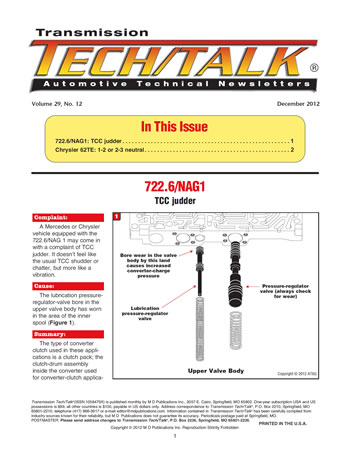



A Mercedes or Chrysler vehicle equipped with the 722.6/NAG 1 may come in with a complaint of TCC judder. It doesn’t feel like the usual TCC shudder or chatter, but more like a vibration.

The lubrication pressure-regulator-valve bore in the upper valve body has worn in the area of the inner spool (Figure 1).
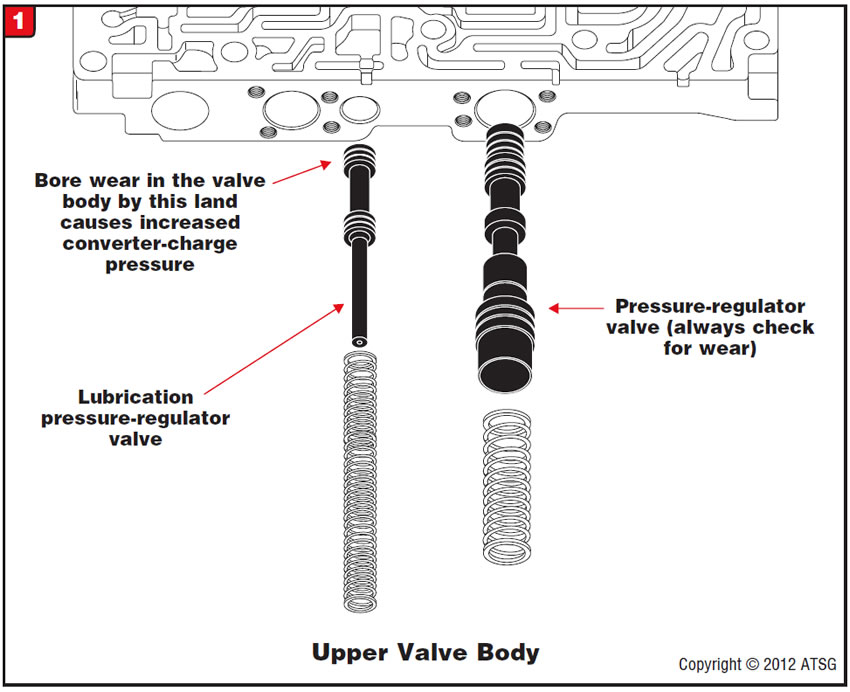

The type of converter clutch used in these applications is a clutch pack; the clutch-drum assembly inside the converter used for converter-clutch application has a typical clutch pack, pressure plate and retaining snap ring (Figure 2).
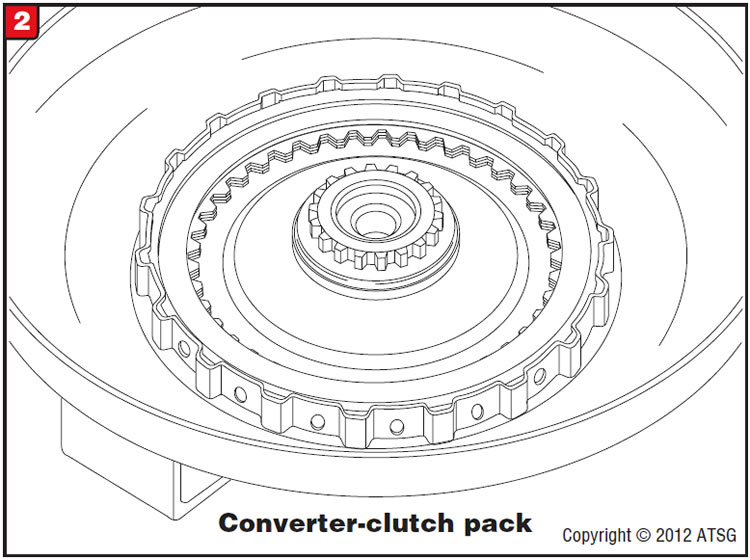
This converter is a three-circuit system: converter-clutch apply and release, converter “in” and converter “out” pressure. The converter clutch is applied by pressure supplied to the clutch drum through the center and out the tip of the input shaft. When pressure is removed, the converter clutch is released (Figure 3).
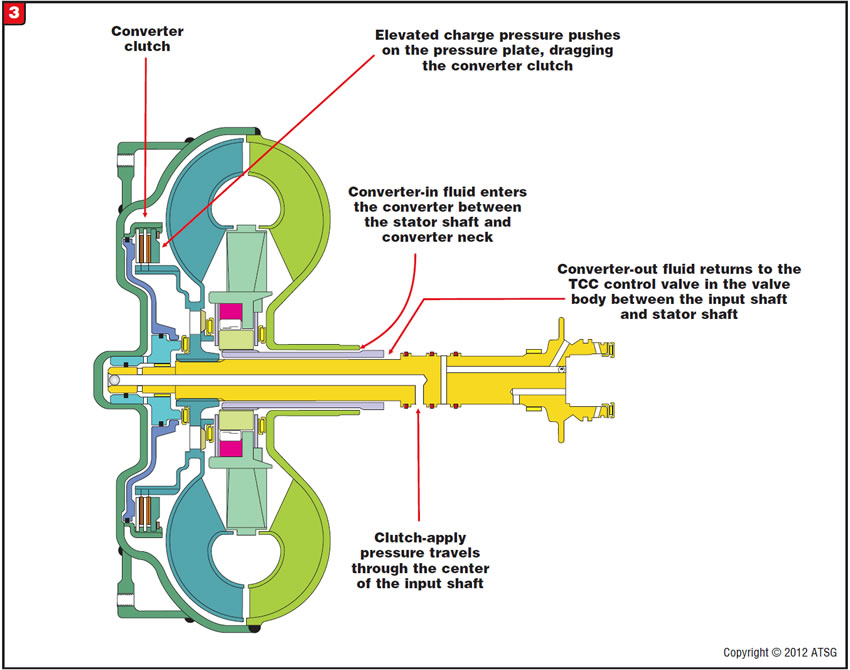
The lubrication pressure-regulator valve regulates the converter “in” pressure, which becomes converter “out” pressure to the cooler.
When the inboard land of the valve wears, unregulated line pressure is able to get into the converter-charge “in” circuit, increasing the pressure inside the converter (Figures 4, 5 and 6).
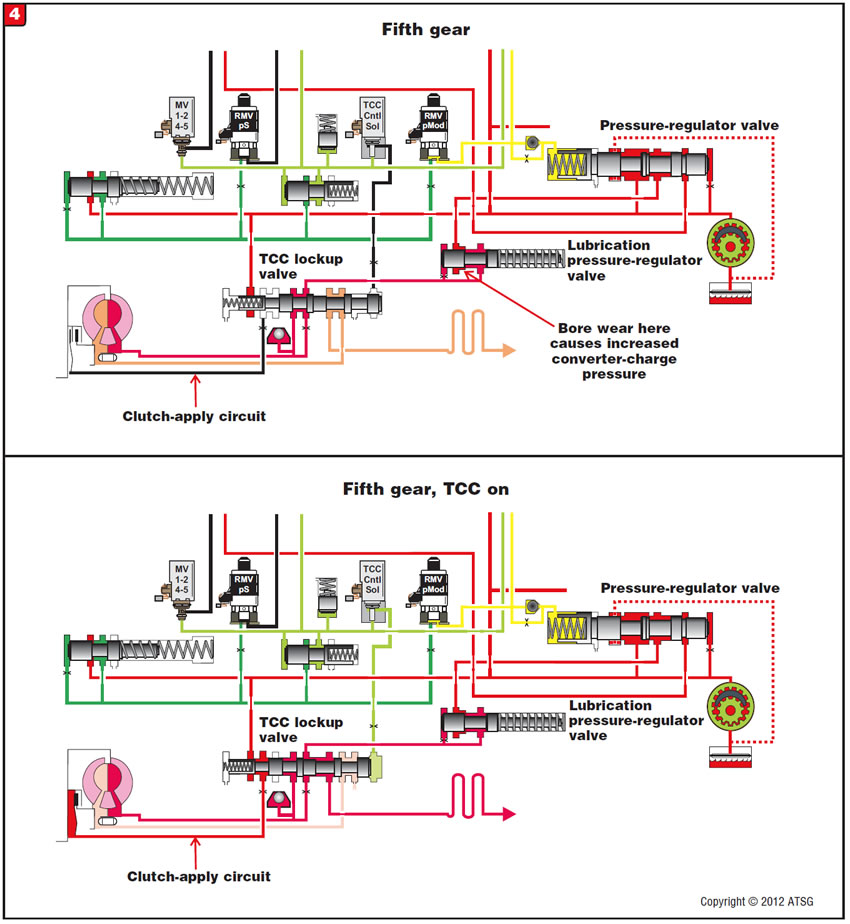
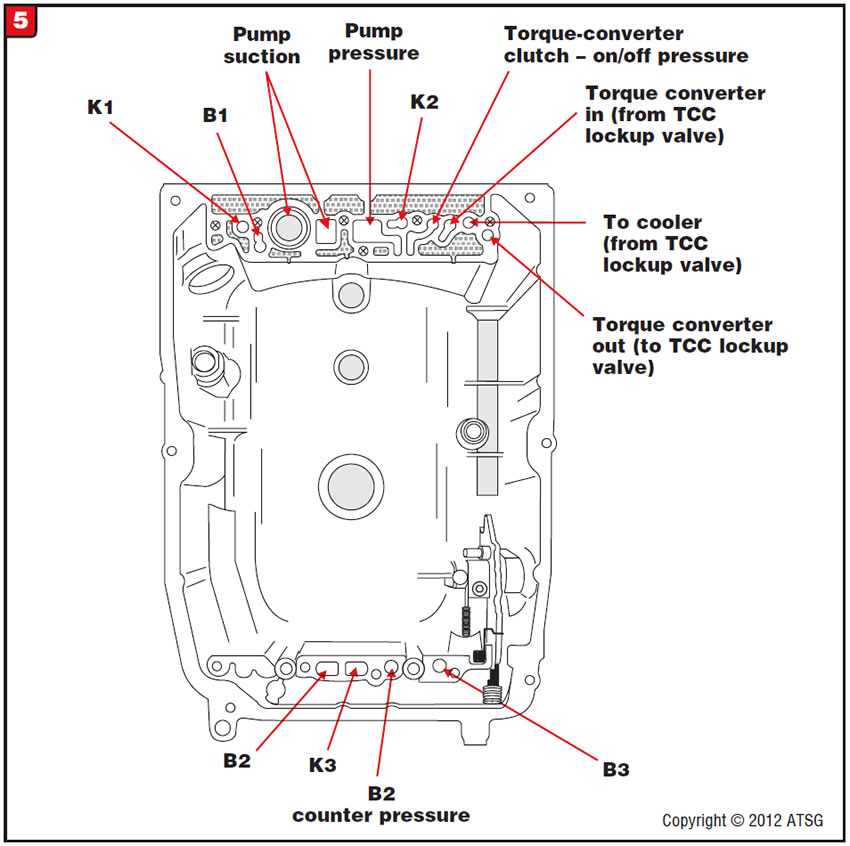
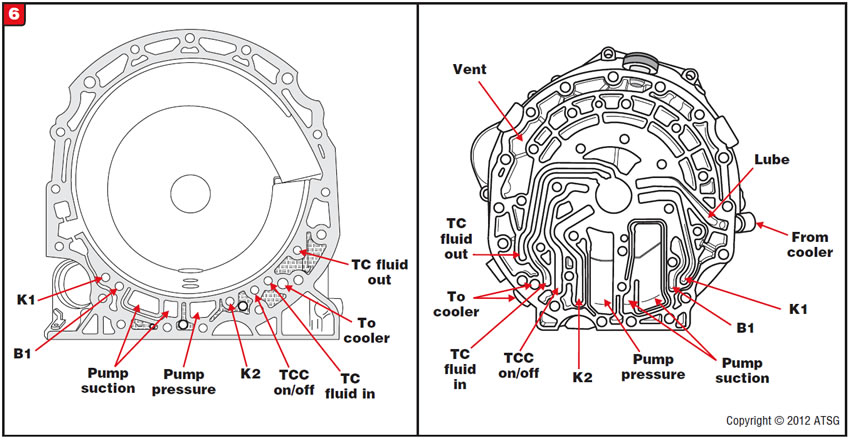
This cross-leaking of pressure causes the clutch apply-and-release operation to be compromised, producing the vibration complaint (Figure 7). When the converter clutch is commanded on, the vibration stops, and depending on the integrity of the main line-pressure circuit, this application can be very abrupt. This is also why there is no lubrication problem when this bore wears, as it is not starving the lube circuit but rather increasing the pressure in that circuit.
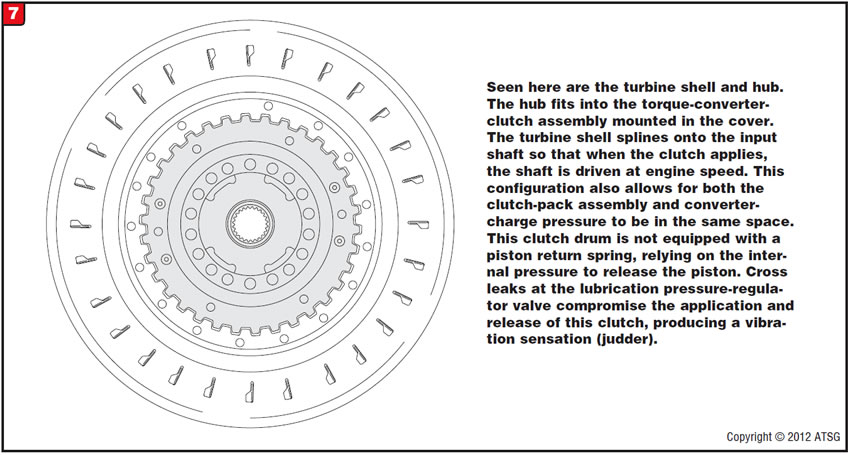

Recondition the lubrication valve bore by using the repair kit available from Superior Transmission Parts.

- Superior 722.6/NAG 1 lubrication pressure-regulator-valve bore-repair package. . . . . . . . . . . K093




2007-and-up Chrysler/Dodge vehicles equipped with the 62TE transaxle may exhibit a complaint of a 1-2 or 2-3 neutral upshift, which commonly occurs after overhaul and results in immediate limp mode. Note: Limp mode is 3rd gear, and if there is a neutral on the 2-3 upshift, limp mode in drive will result in a no-move condition until the ignition is cycled.

The cause may be:
For a neutral on a 1-2 upshift, worn sealing-ring lands on the low-clutch housing causing a severe pressure loss to the direct clutch. Refer to figures 8 and 9 for a component- and solenoid-application chart and note that during the 1-2 upshift, the direct clutch comes on and causes the pinion shaft to turn 1-1.
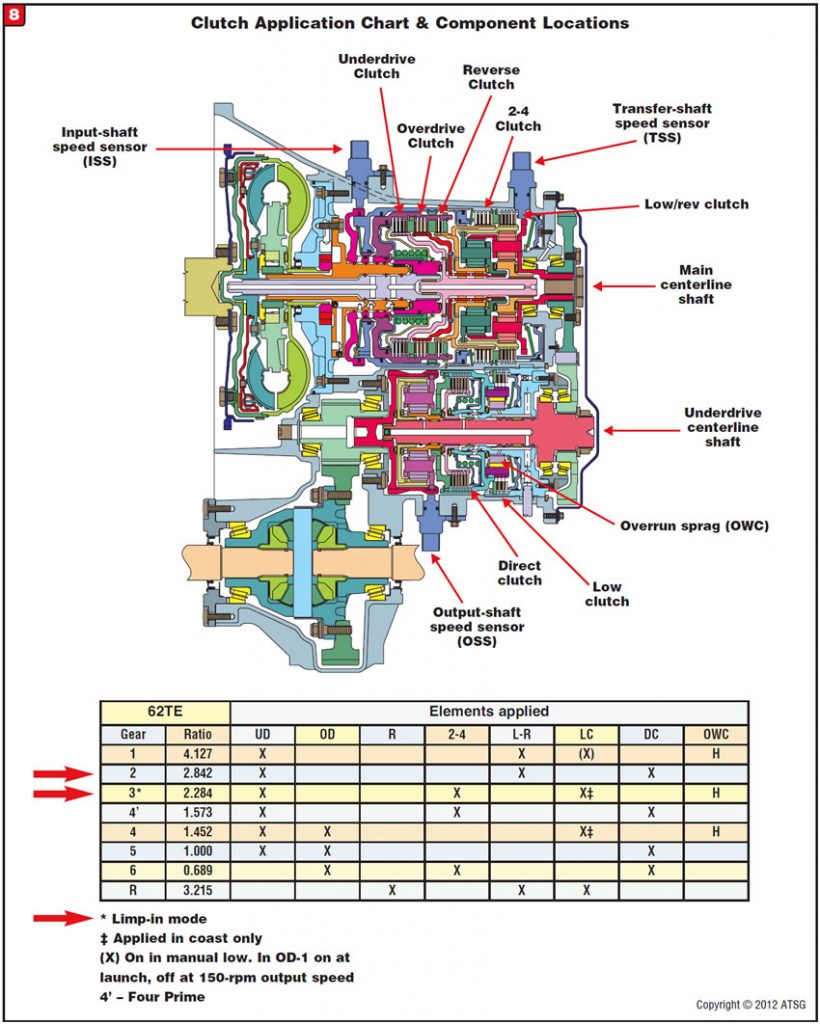
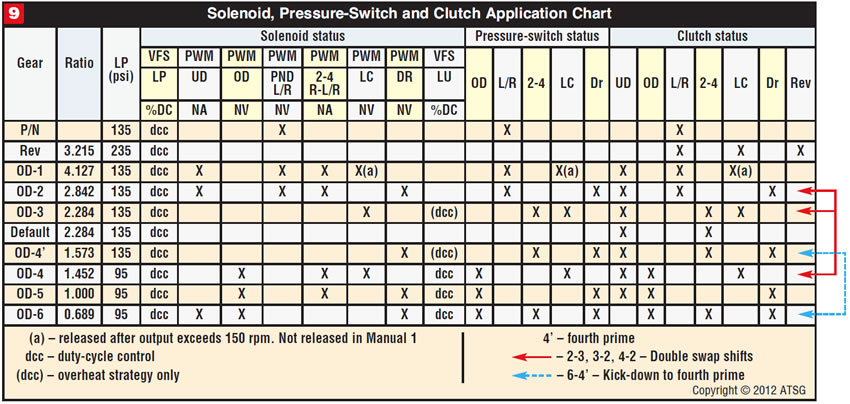
See Figure 10 for location of the direct-clutch sealing rings and piston.
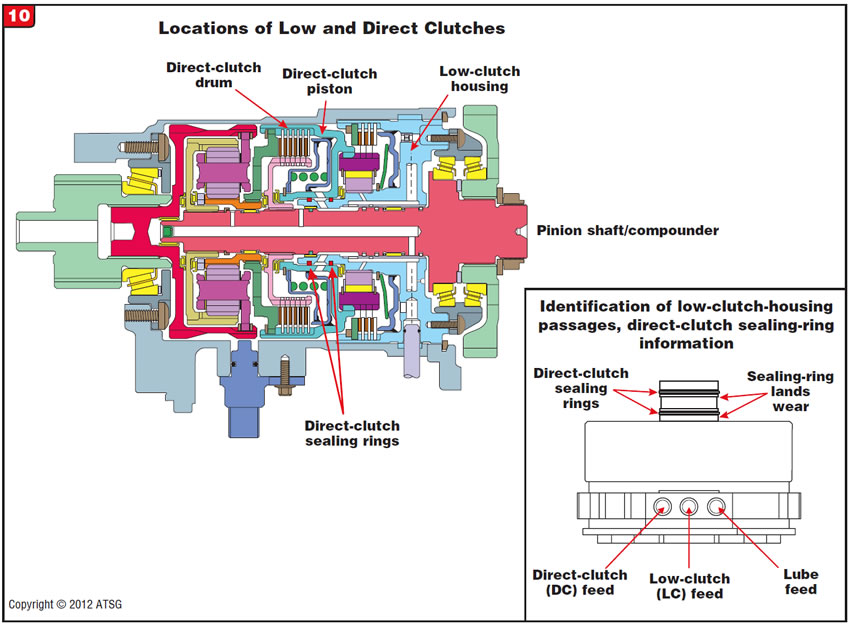
For a neutral on a 2-3 upshift, during the overhaul process the feed pipe for the 2-4 clutch was put in backward, causing a severe leak in the 2-4 clutch. Refer to figures 8 and 9 for a component- and solenoid-application chart and note that during the 2-3 upshift the 2-4 clutch is applied; a severe leak will cause a neutral on the 2-3 and a neutral in limp mode as well. See Figure 11 for location of the 2-4 feed pipe.
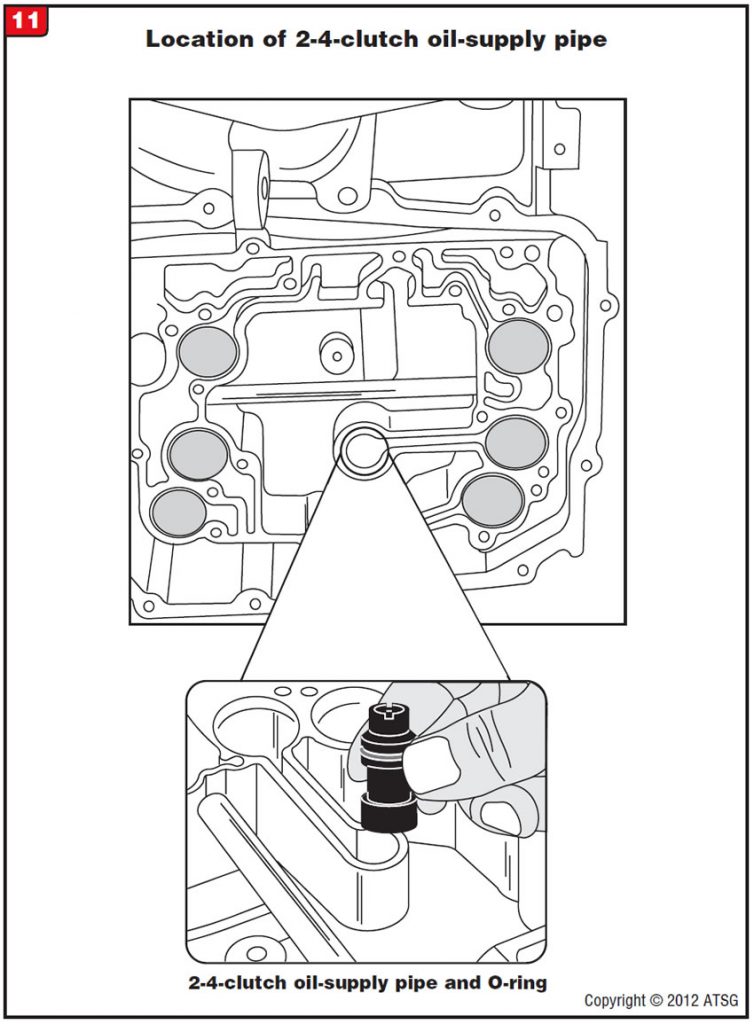

To correct the 1-2 condition:
- Refer to Figure 10 and check for worn sealing rings on the low-clutch housing. The housing will need to be replaced if there is wear. Refer to service information for the part number of the housing. If the ring lands are not worn, remove the piston from the direct clutch and replace as necessary.
- For a neutral on a 2-3 upshift, during the overhaul process the feed pipe for the 2-4 clutch was put in backward, causing a severe leak in the 2-3 clutch. See Figure 11 for location and direction.

- Low-clutch housing (Chrysler part number) . . . . . . . . 1-68029389-AA
Note: Housing comes completely assembled, piston included.


December 2012 Issue
Volume 29, No. 12
- 722.6/NAG1: TCC judder
- Chrysler 62TE: 1-2 or 2-3 neutral

